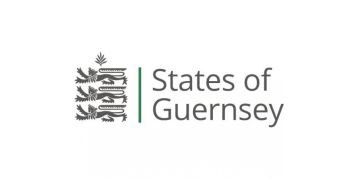Covid is forcing some schools to create supersized classes, but is that necessarily a bad thing? Peter Blatchford reviews the evidence
According to our surveys of teachers’ views and experiences, teachers worry about large classes, arguing that they adversely affect teaching and learning. However, many researchers and commentators have a different view. For them, the class size debate equates to the question: does class size affect pupil attainment?
Given reports of some schools being forced to create supersized classes of 60 pupils as a result of teacher absences in the wake of the pandemic, the question is a particularly important one. In my new book, Rethinking Class Size: The Complex Story of Impact on Teaching and Learning, co-written with Anthony Russell, we present results from our own 20-year research programme involving extensive classroom observations, national questionnaire surveys and detailed case studies. It’s probably the largest dedicated study of class size effects there has been worldwide.
Researchers, contrary to practitioners’ views, commonly find that the statistical association between class size and attainment is not marked and so conclude that class size does not matter much. This has led some to even suggest that we could raise class sizes and instead invest savings in professional development for teachers.
If teaching is just about lecturing, then class size is much less important
Our research identifies three problems with this point of view. One is that research into the association between class size and academic attainment in pupils’ first language and mathematics is limited. It may be that teachers in large classes prioritise the teaching of these subjects (and this may help account for the relatively small difference in pupil academic outcomes, compared to smaller classes); but large classes may affect other pupil “outcomes”, for example, creativity, independent and critical thinking, motivation to learn and so on. We have, unfortunately, very little research that addresses this question.
Second, class size is not an “intervention” in the same way as the distinct pedagogical approaches with which it is commonly compared. It is not something one adds to the classroom, like a reading scheme, but rather one aspect of the classroom context to which teachers and pupils must adapt.
The third and most important problem with the usual research approach is that it does not take into account ways in which class size affects classroom processes, particularly teaching. At the heart of the claim that class size does not matter is the assumption that teaching is essentially about conveying information to students. If teaching was just about lecturing, then class size is much less important. Indeed, in higher education we routinely see lecture classes of over 100.
There are no doubt some who would argue that this kind of teacher-directed, didactic style of teaching is preferable anyway. But this is a very narrow view of teaching, perhaps especially at primary school.
Our research shows that large classes:
- make differentiated teaching and individual support more difficult;
- result in reduced knowledge about individual pupils;
- make classroom management more demanding;
- reduce the amount of educationally valuable activities;
- increase the demands of marking, report writing, planning and preparation, and
- increase teacher stress.
Large classes are particularly demanding given the diverse pupil intake found in many UK schools, as well as policies of inclusion, which mean more individual support is often needed. Worryingly, we found that it is low-attaining pupils and those with SEND who are most disadvantaged in large classes, for example, in terms of classroom engagement.
Our central conclusion is that the effect of class size on academic attainment is not a direct one, as is assumed in much research, but interconnects in complex ways with classroom processes like the balance of whole-class, group and individual teaching, classroom management, relations between pupils, classroom tasks and administrative activities such as marking.
At a time of national emergency, staff in schools have to adapt to staff and pupil numbers as best they can, and large classes may be necessary in the short term. Teachers will also find inventive ways of teaching large groups. But we should not assume this is a long-term solution. We need to be aware of the implications for the quality of teaching and the breadth of learning – especially for the most vulnerable.








Or to put it more succinctly: good teaching rests primarily on good relationships and these are harder to build where numbers are larger. But of course the technocrats would miss something like that.
I completely agree with Mr. Stock; education is primarily a relationship, the quality of which is dependent on the quality of the relationship.
Excellent teachers are those who begin by building positive working alliances between themselves and their students. Attendance is excellent in lessons where students feel and know that their teacher has a genuine vested interest in their (overall/entire) educational wellbeing and progress.
Large class sizes hinder the development of the above (i.e. a positive working alliance) and efforts are focused upon classroom management.